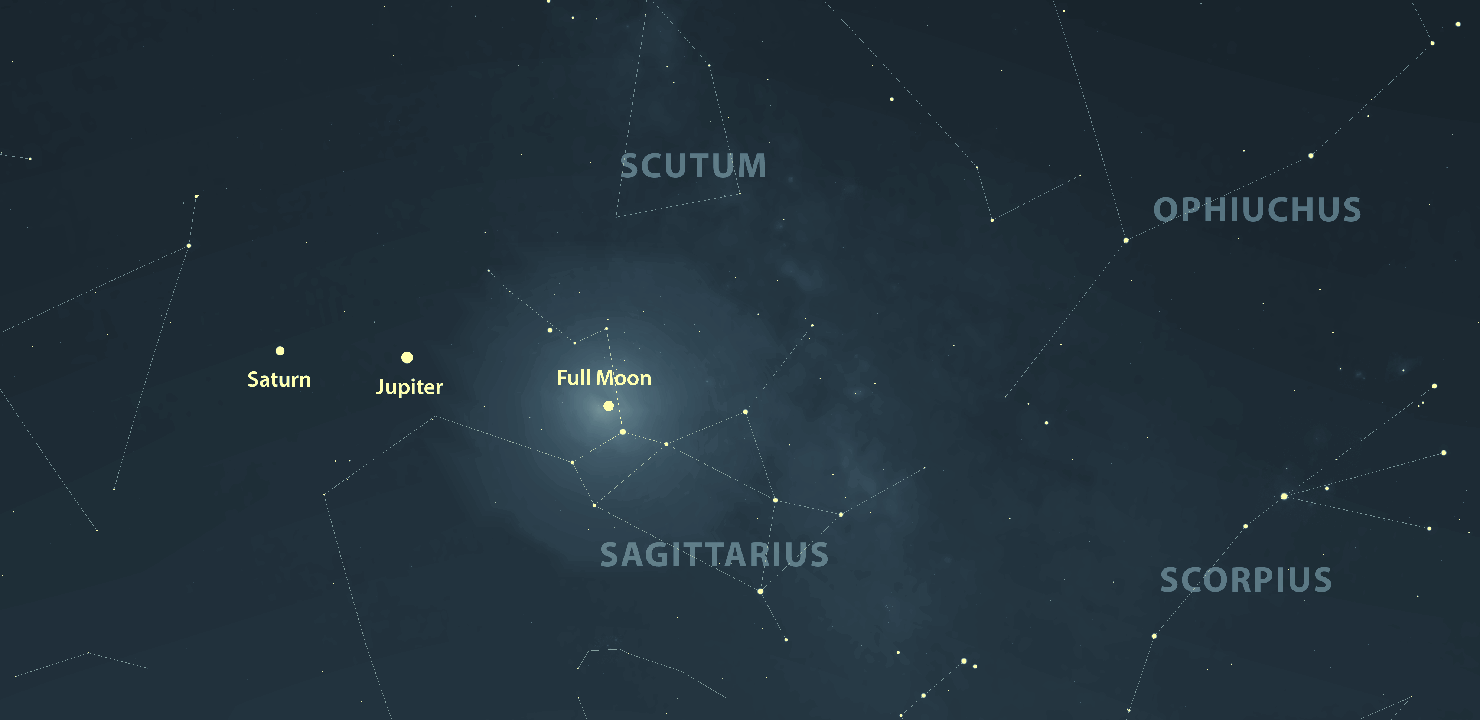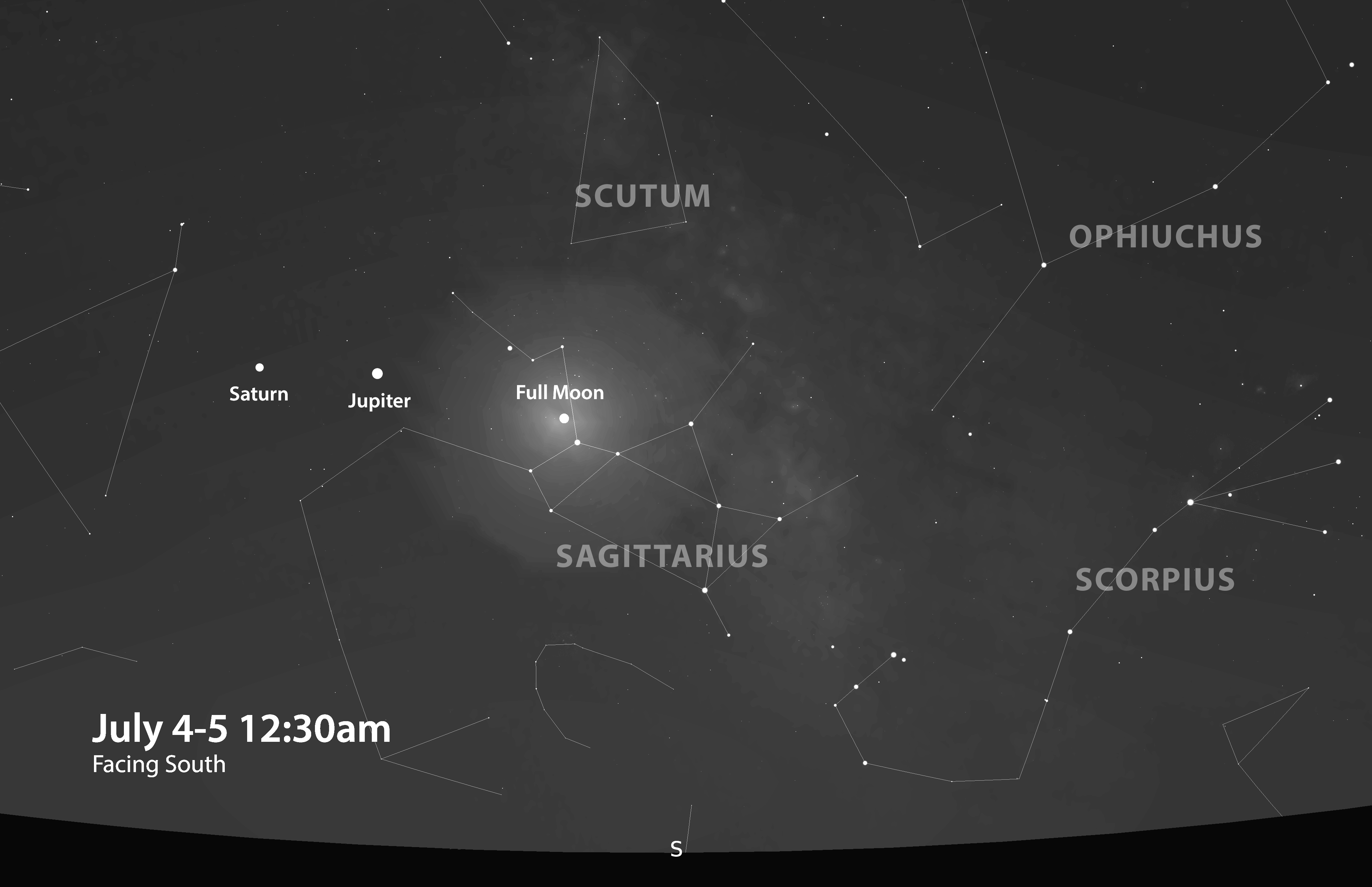
A Minimal Penumbral Lunar Eclipse & Two “Meteorocre” Shooting Star Displays
July 2020 :
Note: This article may contain outdated information
This article was published in the July 2020 issue of The Skyscraper and likely contains some information that was pertinent only for that month. It is being provided here for historical reference only.
"What's in a name? That which we call a July Full Moon
By many other names would shine as bright."
My apologies to William Shakespeare, but I simply couldn’t resist mangling the above famous quote from Romeo and Juliet.
Full Moons have a myriad of names. Here in the United States the colonists adopted many of them from Native Americans, predominantly the eastern Algonquin nation. While these descriptive names have become the primary ones by which we identify each Full Moon, many other names have been ascribed to them.
For example, the July Full Moon is usually called the Full Buck Moon. This name was one brought over by the colonists from Europe. Male deer in both Europe and North and South America shed their antlers yearly, and by July a new set has emerged. Another old-world name for this Full Moon is Hay Moon, signaling when the hay field had been reaped. And finally Thunder Moon has been used for obvious reasons during northern hemisphere summer months.
This year the Full Buck Moon occurs on the night of July 4-5, with the precise moment being 12:44 a.m. Eastern Daylight Time. Furthermore, a special astronomical event will also occur this night. A very shallow penumbral lunar eclipse will occur when the Moon passes between the Sun and the Earth and slides into the Earth’s light shadow called the penumbra. This event will be most difficult to detect as only about one-third of the top portion of the lunar surface will be within the penumbral shadow. The following table provides the timetable of events. All times are EDT (Eastern Daylight Time).
|
Penumbral Eclipse begins |
July 4, 11:07:23 pm |
|
Maximum Eclipse |
July 5, 12:29:51 am |
|
Penumbral Eclipse ends |
July 5, 1:52:21 am |
When the maximum eclipse occurs at 12:29:51 a.m. EDT, the Moon will be high in the sky almost due south and about 23 degrees above the horizon. It will be located within the easily recognizable constellation of Sagittarius, which looks like a teapot. The Moon will be just to the left of the handle of the teapot asterism. The top third of the Moon’s surface may look somewhat subdued. But humid summer atmospheric conditions may dim the moonlight anyway. It will be interesting to see if the event will be noticeable at all. Total duration of this eclipse is two hours and forty-five minutes.

While watching the lunar eclipse you will certainly notice two bright objects in the Moon’s vicinity. The brightest one, Jupiter, will be ten degrees to the Moon’s left. And five degrees from Jupiter in the same direction will be Saturn. Both of these worlds reach opposition (opposite the Sun in the sky) this month. And on their dates of closest approach to the Earth, July 15 and July 20 respectively, Jupiter will be approximately 384.7 million miles from the Earth, while Saturn will be a more distant 836 million miles away from us. From July through the end of the year will present a great opportunity to view these distant worlds with a telescope. It still may be some time before the local observatories open for public viewing due to COVID-19, so if you have a small telescope, I would recommend you focus in on these planets. I’ll write some observing guides for them in a future column.
And finally, at July’s end, the sky will shower the Earth with two meteor showers. They are the Delta Aquarids and the Alpha Capricornids. While these shooting star displays are best seen in the southern hemisphere, we can observe a few of their members here in southern New England. Both have broad peaks (July 28-30), so if the weather does not cooperate you can expect to observe some meteors over this date range. It is convenient that these showers overlap, because their combined hourly peak total is about 15-20 meteors per hour at best.
Also, the constellations Aquarius and Capricornus, from which these shooting stars appear to emanate, will be just less than halfway between the southern horizon and zenith (straight up) around 2:00 a.m. The Moon will be at first quarter on the 27th, but it and its waxing gibbous phase over the next couple of nights will set between midnight and 2:30a.m. So, moonlight will somewhat overshadow some of the fainter shooting stars.
Both showers display fairly bright yellow meteors, while the Alpha Capricornids are noted for producing brilliant fireballs as they enter our atmosphere at around 15 miles per second. However, you might see more fireflies than meteors, depending upon sky conditions. That scenario could be a good thing if the meteor activity is low. At least the quick flickering of a firefly will help to keep you awake! The Delta Aquarids plunge into the Earth’s atmosphere at a moderate speed of 25.5 miles per second.
Keep your eyes to the skies.



